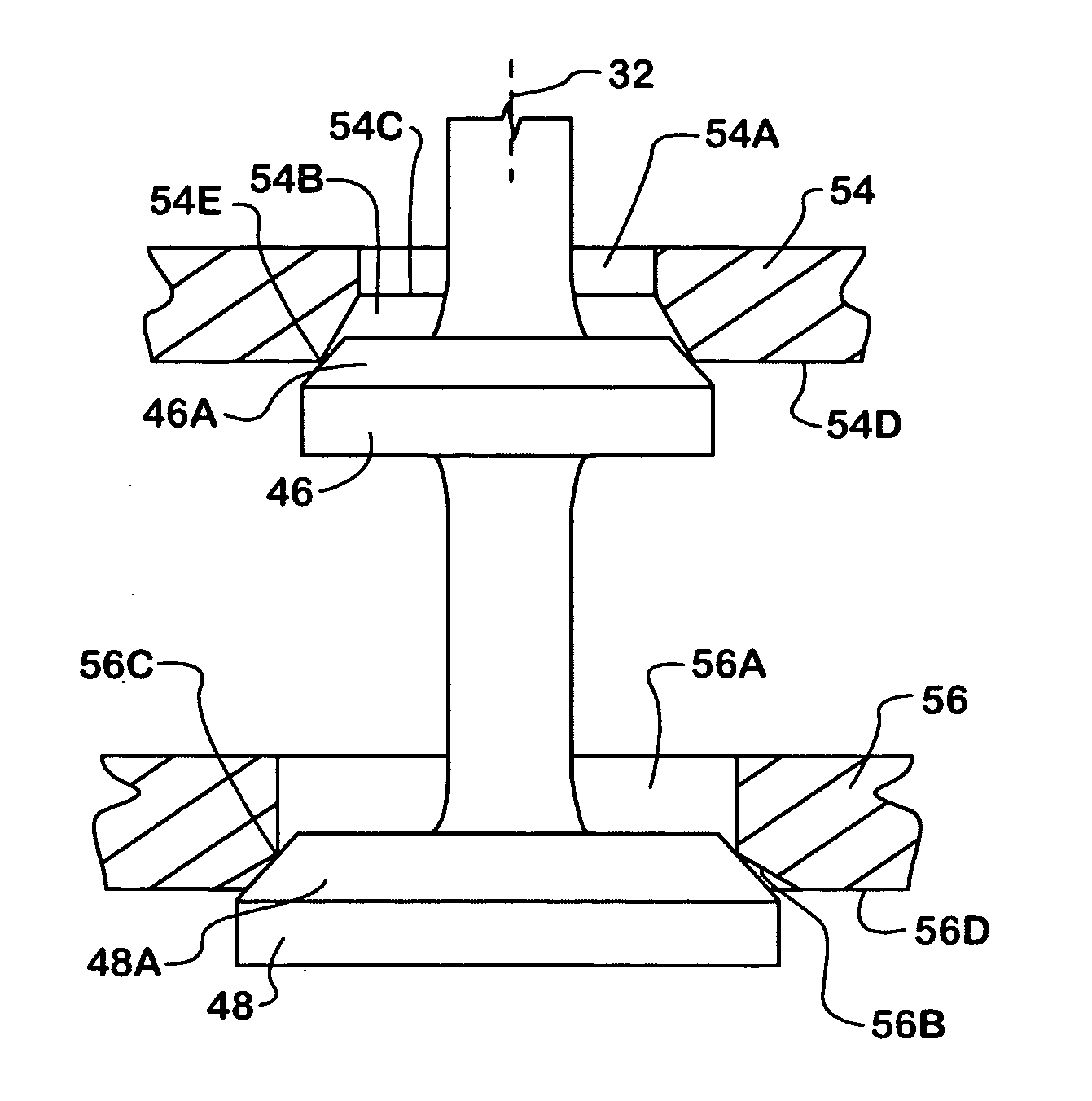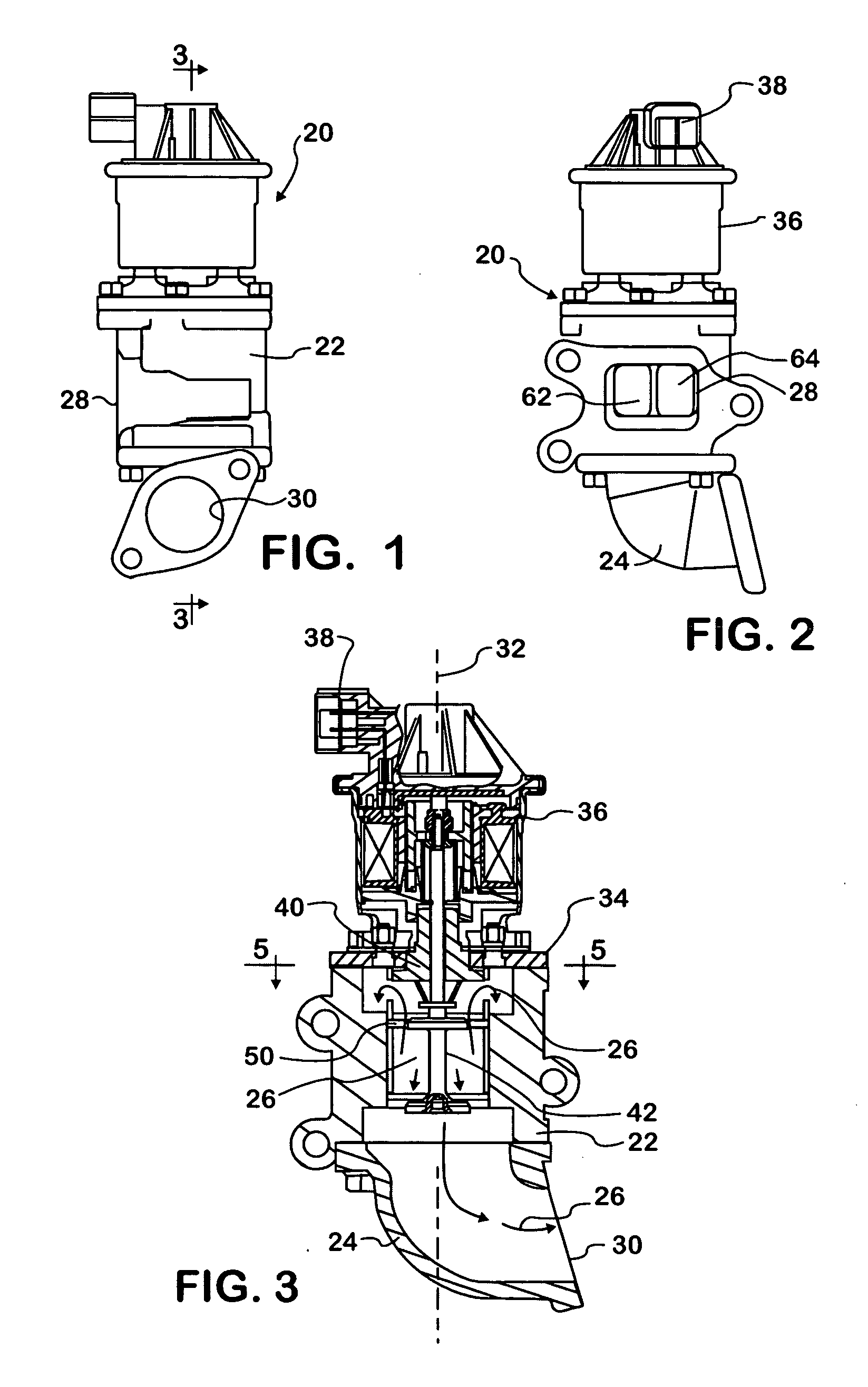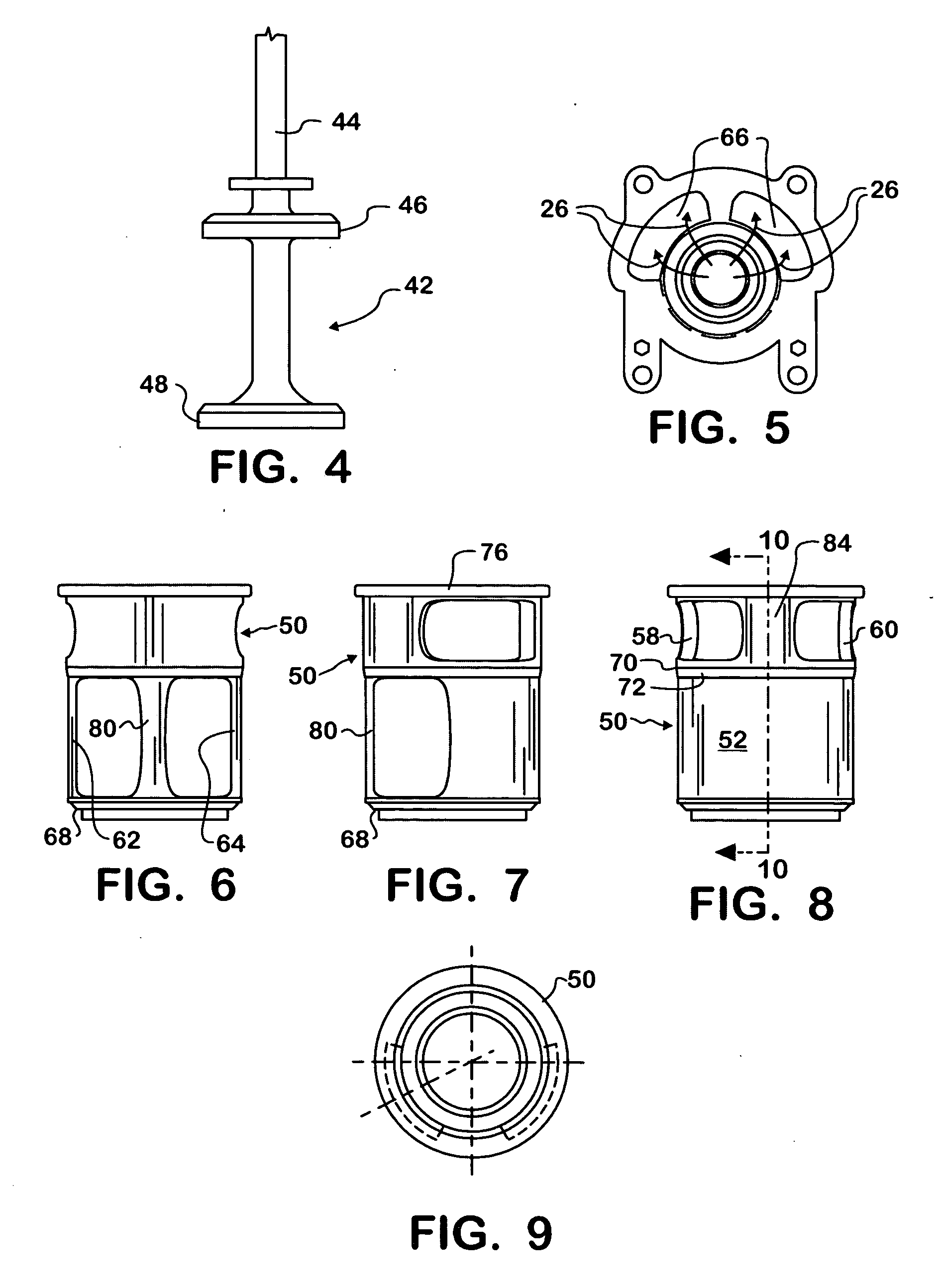Emission control valve having improved force-balance and Anti-coking
a technology of anti-coking and force-balancing, which is applied in the direction of mechanical equipment, machines/engines, and non-fuel substance addition to fuel, etc., can solve the problems of harsh operating environment of egr valves, detrimental to valve performance, and tailpipe emission requirements impose stringent control requirements on such valves, so as to minimize the influence of exhaust pressure fluctuations on valve operation, improve valve performance, and prolong useful life
- Summary
- Abstract
- Description
- Claims
- Application Information
AI Technical Summary
Benefits of technology
Problems solved by technology
Method used
Image
Examples
Embodiment Construction
[0030]FIGS. 1-3 illustrate the general arrangement and organization of an exemplary EEGR valve 20 embodying principles of the present invention. Valve 20 comprises a base 22 and an elbow 24 assembled together to form a flow path 26 through the valve between an inlet port 28 provided in a flange at a side of base 22 and an outlet port 30 provided in a flange at one end of elbow 24.
[0031] Base 22 is a metal part that has a main longitudinal axis 32. Base 22 may be considered to have a generally cylindrical shape about axis 32 comprising a generally cylindrical wall bounding an interior space that is open at opposite axial end faces of the base. Base 22 is constructed so that its interior space is also open to inlet port 28.
[0032] An end of elbow 24 that is opposite the end containing outlet port 30 is fastened in a sealed manner to the lower end face of base 22 so that the interior of elbow 24 is open to the interior space of base 22. A cover 34 is fastened in a sealed manner to the...
PUM
 Login to View More
Login to View More Abstract
Description
Claims
Application Information
 Login to View More
Login to View More - R&D
- Intellectual Property
- Life Sciences
- Materials
- Tech Scout
- Unparalleled Data Quality
- Higher Quality Content
- 60% Fewer Hallucinations
Browse by: Latest US Patents, China's latest patents, Technical Efficacy Thesaurus, Application Domain, Technology Topic, Popular Technical Reports.
© 2025 PatSnap. All rights reserved.Legal|Privacy policy|Modern Slavery Act Transparency Statement|Sitemap|About US| Contact US: help@patsnap.com



